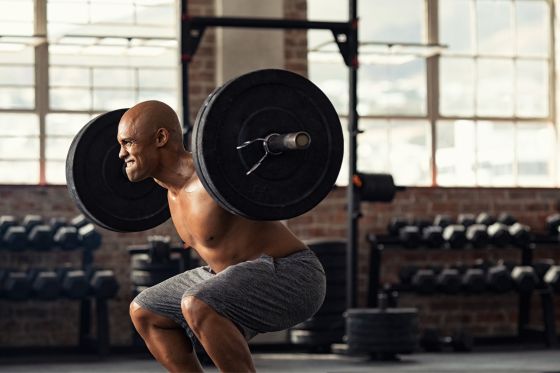Weightlifting, back squatting, and deadlifting are integral exercises for anyone serious about strength training.
However, these activities can also pose a risk for lower back pain, which can sideline you from the gym and disrupt your progress.
For dedicated weightlifters and even the more casual gym-goers or those just starting out, experiencing lower back pain from lifting can be both physically and emotionally challenging, leading to deconditioning, loss of strength, and missing out on the exercise you love.
The Importance of Keeping Your Back in Top Form
Keeping your back in top form is essential for weightlifting, back squatting, and deadlifting.
This is crucial for serious lifters and beginners who want to learn and progress safely.
Understanding the common causes of lower back pain from lifting and implementing preventative measures can help you maintain your fitness goals and avoid setbacks.
Common Causes of Lower Back Pain in Weightlifters
Form Breakdown
One of the most common causes of lower back pain from lifting is poor form.
Even experienced lifters can struggle with maintaining proper form as they increase weight or challenge themselves.
When form breaks down, the structures and tissues in your lower back are at a higher risk of becoming aggravated.
Capacity and Volume
Another major cause of lower back pain from lifting is exceeding your body’s capacity.
This includes lifting weights that are too heavy or performing too many repetitions.
Your body needs to use the right muscle groups and maintain good form to handle the load without risking injury.
Tips to Avoid Lower Back Pain from Lifting
1. Maintain Proper Form
Proper form is crucial in preventing lower back pain from lifting. This includes keeping a neutral spine, engaging your core, and using your legs and hips to lift rather than your back.
Regularly check your form, even if you’re an experienced lifter, and consider working with a coach or physical therapist to ensure you’re lifting correctly.
Benefit: Reduces the risk of injury by ensuring that your muscles and joints are working efficiently and correctly.
2. Build Core Strength
A strong core provides stability and support for your lower back during lifting exercises. Incorporate exercises like planks, Russian twists, and leg raises into your routine to strengthen your core muscles.
Benefit: Enhances stability and reduces the strain on your lower back during lifts.
3. Progress Gradually
Avoid jumping to heavy weights too quickly. Gradually increase the weight you lift and the number of repetitions to allow your body to adapt and build strength.
Benefit: Prevents overloading your muscles and joints, reducing the risk of injury.
4. Use Proper Equipment
Using the right equipment, such as weightlifting belts, can provide additional support to your lower back.
Ensure that your lifting environment is safe and that you’re using weights and equipment suited to your level of experience.
Benefit: Provides extra stability and support, helping to maintain proper form and reduce strain on your lower back.
5. Incorporate Flexibility and Mobility Exercises
Flexibility and mobility are essential for preventing lower back pain from lifting.
Regularly stretch your hamstrings, hip flexors, and lower back to maintain flexibility. Incorporate mobility exercises like hip circles and spinal twists into your routine.
Benefit: Improves range of motion, reduces stiffness, and helps maintain proper form during lifts.
The Difference Between Soreness and Injury
It’s important to differentiate between normal muscle soreness and an injury.
Muscle soreness should subside within a couple of days. If the soreness persists, becomes sharper, or increases to pain, it might indicate an injury.
Monitor your symptoms and adjust your training accordingly to prevent further damage.
Free Discovery Visit at P3 Athletic
Struggling with back pain while weightlifting, back squatting, or deadlifting?
Whether you’re an experienced lifter or just getting started, this can be a major setback. At P3 Athletic, we’re here to help you lift pain-free and achieve your fitness goals.
Take advantage of our Free Discovery Visit this month to see how we can support you with our state-of-the-art facilities and equipment.
Don’t wait to get back to lifting without pain! Reach out to arrange your session.
Other Free Resources For Weightlifters and Gym-Goers
Read Our Blog – Stretches for Runners Knee Pain: Your Pre-Run Prep Guide
Read Our Blog – 5 Running Mistakes Worsening Your Hip And Knee Pain

